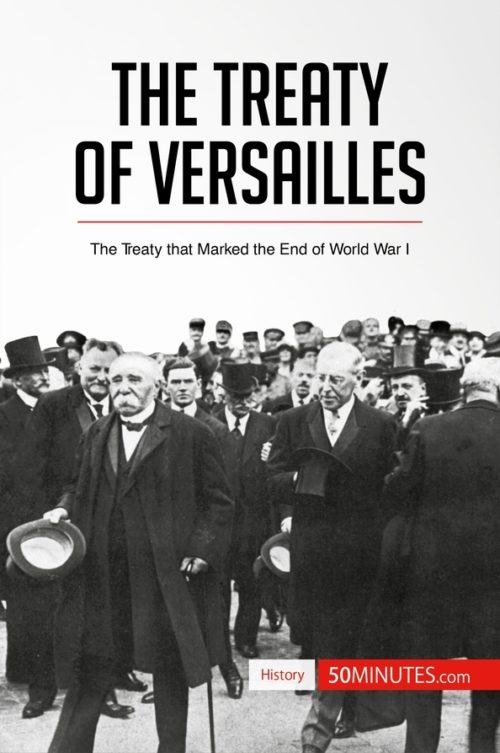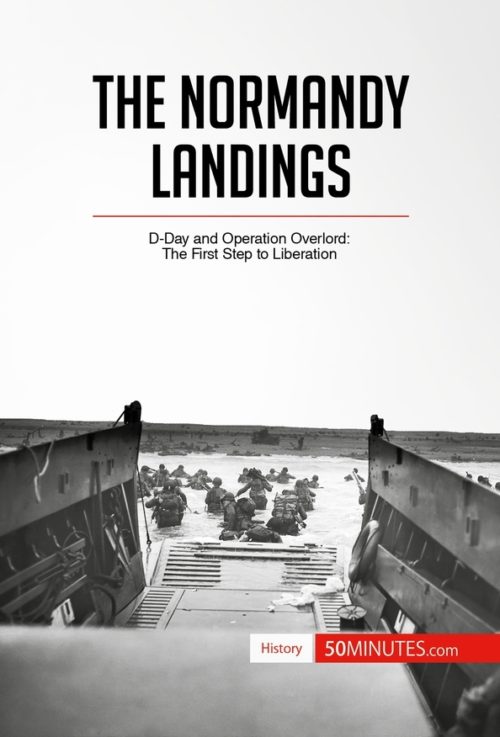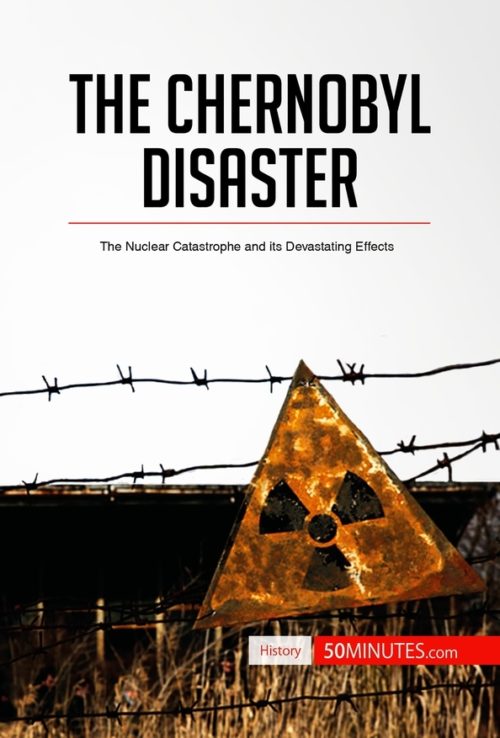The Six-Day War
The Six-Day War
The Conflict that Re-Shaped the Middle East
$4.99
978280627308644EBookPlurilingua PublishingThe Six-Day War in 1967 was a major crisis in the Arab-Israeli conflict and the Israeli-Palestinian conflict, and caused outrage across the Arab world. After a tense period in which the Israelis and Egyptians exchanged threats, Israel launched a pre-emptive strike and destroyed the Egyptian air force in a matter of hours. The Israeli forces then continued their advance, and by the end of the conflict Israel had quadrupled the territory it controlled and seized the Gaza Strip and the West Bank. In just 50 minutes, you will learn about the background to the Six-Day War, including the 1948 Palestine War and the Suez Crisis in 1956, and find out about its significant consequences, such as the decline of Pan-Arab secular nationalism and the founding of the Palestinian Liberation Organization.
This straightforward and informative book provides a discussion of the events leading up to the Six-Day War and a chronology of key incidents. It also features biographies of the main commanders and leaders, including Gamal Abdel Nasser and Levi Eshkol, a valuable introduction to the political and social context, and an evaluation of the war's consequences, giving you all the essential information about this controversial conflict and its decisive impact on the modern Middle East.
About the Six-Day War
Prior to the outbreak of the Six-Day War in 1967, tensions were running high between Egypt and Israel. The Egyptian President's decision to close the Strait of Tiran prevented the Israelis from accessing the Red Sea and resulted in a series of threats from both sides. In the ensuing conflict, which began with an Israeli offensive, the young nation seized a vast area of territory, and tensions between Israel and Egypt did not really subside until after the Camp David Accords in 1978.
This clear and accessible 44-page book is structured as follows:
Introduction to the Six-Day War
Political and social context
A forty-year-old conflict
The Arab Revolt (1936-1938)
The 1948 War of Independence
The crisis of the Suez Canal (1956)
The sixties and rumors of war
A new war was looming
Commanders and leaders
Gamal Abdel Nasser, President of Egypt
Levi Eshkol, Israeli Prime Minister
Moshe Dayan, Israeli Defense Minister
Analysis of the war
Composition and strategies of the forces
Chronology of events: three fronts instead of one
The outcome of the battle
Impact of the Six-Day War
Openness to religious radicalism in the Arab world
A war that led to many others
The Palestinians: forgotten after the conflict
Summary
The Six-Day War in 1967 was a major crisis in the Arab-Israeli conflict and the Israeli-Palestinian conflict, and caused outrage across the Arab world. After a tense period in which the Israelis and Egyptians exchanged threats, Israel launched a pre-emptive strike and destroyed the Egyptian air force in a matter of hours. The Israeli forces then continued their advance, and by the end of the conflict Israel had quadrupled the territory it controlled and seized the Gaza Strip and the West Bank. In just 50 minutes, you will learn about the background to the Six-Day War, including the 1948 Palestine War and the Suez Crisis in 1956, and find out about its significant consequences, such as the decline of Pan-Arab secular nationalism and the founding of the Palestinian Liberation Organization.
This straightforward and informative book provides a discussion of the events leading up to the Six-Day War and a chronology of key incidents. It also features biographies of the main commanders and leaders, including Gamal Abdel Nasser and Levi Eshkol, a valuable introduction to the political and social context, and an evaluation of the war's consequences, giving you all the essential information about this controversial conflict and its decisive impact on the modern Middle East.
About the Six-Day War
Prior to the outbreak of the Six-Day War in 1967, tensions were running high between Egypt and Israel. The Egyptian President's decision to close the Strait of Tiran prevented the Israelis from accessing the Red Sea and resulted in a series of threats from both sides. In the ensuing conflict, which began with an Israeli offensive, the young nation seized a vast area of territory, and tensions between Israel and Egypt did not really subside until after the Camp David Accords in 1978.
This clear and accessible 44-page book is structured as follows:
Introduction to the Six-Day War
Political and social context
A forty-year-old conflict
The Arab Revolt (1936-1938)
The 1948 War of Independence
The crisis of the Suez Canal (1956)
The sixties and rumors of war
A new war was looming
Commanders and leaders
Gamal Abdel Nasser, President of Egypt
Levi Eshkol, Israeli Prime Minister
Moshe Dayan, Israeli Defense Minister
Analysis of the war
Composition and strategies of the forces
Chronology of events: three fronts instead of one
The outcome of the battle
Impact of the Six-Day War
Openness to religious radicalism in the Arab world
A war that led to many others
The Palestinians: forgotten after the conflict
Summary
application/pdf1 1948 Palestine War, 20th century, Arab- Israeli conflict, Egypt, Gaza strip, Israel, Jordan, Middle East, Palestine, Six-Day War, Syria, war, Zionism
DOWNLOAD THIS BOOK
The Six-Day War in 1967 was a major crisis in the Arab-Israeli conflict and the Israeli-Palestinian conflict, and caused outrage across the Arab world. After a tense period in which the Israelis and Egyptians exchanged threats, Israel launched a pre-emptive strike and destroyed the Egyptian air force in a matter of hours. The Israeli forces then continued their advance, and by the...
Read more
The Six-Day War in 1967 was a major crisis in the Arab-Israeli conflict and the Israeli-Palestinian conflict, and caused outrage across the Arab world. After a tense period in which the Israelis and Egyptians exchanged threats, Israel launched a pre-emptive strike and destroyed the Egyptian air force in a matter of hours. The Israeli forces then continued their advance, and by the end of the conflict Israel had quadrupled the territory it controlled and seized the Gaza Strip and the West Bank. In just 50 minutes, you will learn about the background to the Six-Day War, including the 1948 Palestine War and the Suez Crisis in 1956, and find out about its significant consequences, such as the decline of Pan-Arab secular nationalism and the founding of the Palestinian Liberation Organization.
This straightforward and informative book provides a discussion of the events leading up to the Six-Day War and a chronology of key incidents. It also features biographies of the main commanders and leaders, including Gamal Abdel Nasser and Levi Eshkol, a valuable introduction to the political and social context, and an evaluation of the war’s consequences, giving you all the essential information about this controversial conflict and its decisive impact on the modern Middle East.
About the Six-Day War
Prior to the outbreak of the Six-Day War in 1967, tensions were running high between Egypt and Israel. The Egyptian President’s decision to close the Strait of Tiran prevented the Israelis from accessing the Red Sea and resulted in a series of threats from both sides. In the ensuing conflict, which began with an Israeli offensive, the young nation seized a vast area of territory, and tensions between Israel and Egypt did not really subside until after the Camp David Accords in 1978.
This clear and accessible 44-page book is structured as follows:
- Introduction to the Six-Day War
- Political and social context
- A forty-year-old conflict
- The Arab Revolt (1936-1938)
- The 1948 War of Independence
- The crisis of the Suez Canal (1956)
- The sixties and rumors of war
- A new war was looming
- Commanders and leaders
- Gamal Abdel Nasser, President of Egypt
- Levi Eshkol, Israeli Prime Minister
- Moshe Dayan, Israeli Defense Minister
- Analysis of the war
- Composition and strategies of the forces
- Chronology of events: three fronts instead of one
- The outcome of the battle
- Impact of the Six-Day War
- Openness to religious radicalism in the Arab world
- A war that led to many others
- The Palestinians: forgotten after the conflict
- Summary






